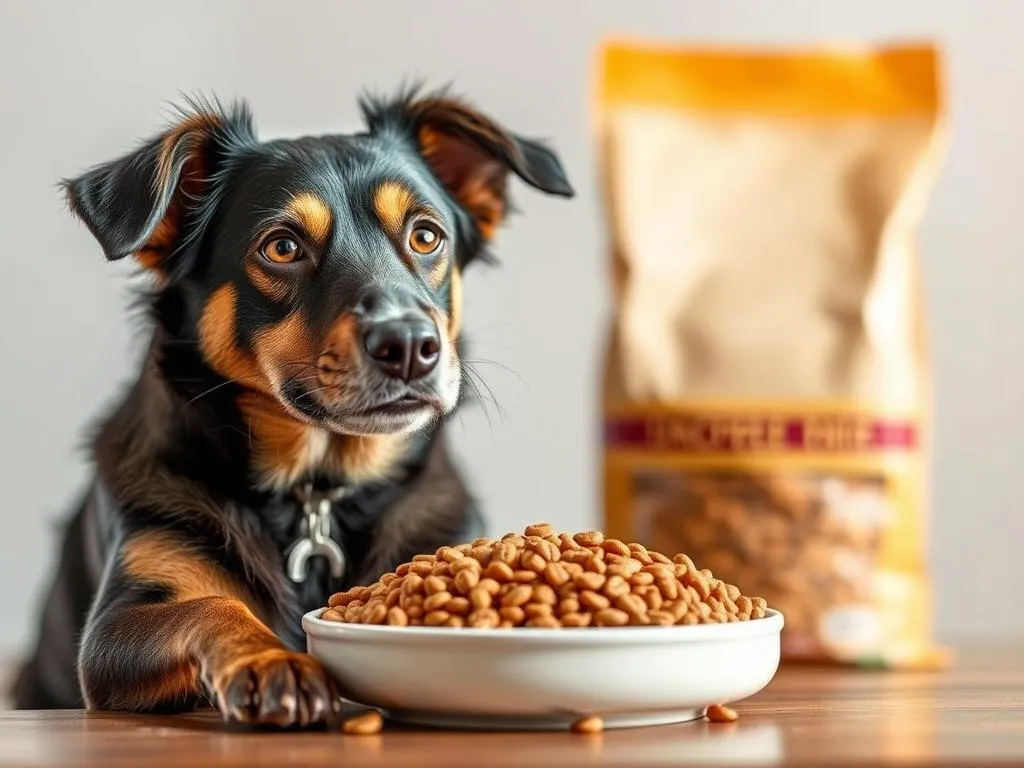
Introduction
Understanding your dog’s nutrition is crucial for their overall health and well-being. With the increasing awareness of canine dietary needs, many pet owners are choosing grain-free diets for their furry friends. These diets have gained popularity as they are believed to address various health issues, including allergies and digestive problems. In Canada, there is a wide array of best grain-free dog foods that cater to different breeds, ages, and health conditions.
When selecting the right dog food, it’s essential to consider several factors such as nutritional content, ingredient quality, and your dog’s specific needs. This article delves into everything you need to know about grain-free diets for dogs, their benefits, potential drawbacks, and the top grain-free dog foods available in Canada.
Understanding Grain-Free Diets for Dogs
What is a Grain-Free Diet?
A grain-free dog food is formulated without grains, such as wheat, corn, and rice. Instead, these diets typically rely on alternative carbohydrate sources, such as sweet potatoes, peas, and lentils. This approach is particularly appealing to dog owners who suspect their pets may have grain sensitivities or allergies.
Benefits of Grain-Free Diets
Many dog owners report several benefits when switching their pets to grain-free diets:
- Digestive Health: For dogs with grain intolerances, eliminating grains can lead to fewer digestive issues, such as bloating and gas.
- Allergy Management: Grain-free diets can help alleviate skin irritations and allergies in some dogs, as grains are common allergens.
- Higher Protein Content: Grain-free dog foods often contain higher levels of protein, which supports muscle development and overall health.
- Better Digestibility: Some dogs may digest protein from meat sources more easily than carbohydrates from grains.
Potential Drawbacks of Grain-Free Diets
While grain-free diets can be beneficial, it’s essential to recognize potential drawbacks:
- Misconceptions: Many dog owners believe all grains are harmful; however, whole grains can offer nutritional benefits and fiber.
- Nutritional Imbalance: Some grain-free foods may be excessively high in protein or lack essential nutrients if not properly balanced.
- Taurine Deficiency: Recent studies have linked certain grain-free diets to heart issues in dogs due to low levels of taurine, an essential amino acid.
Key Nutritional Components of Dog Food
Essential Nutrients for Dogs
A balanced dog food should contain the following essential nutrients:
- Proteins: For muscle building and repair.
- Fats: For energy and healthy skin and coat.
- Carbohydrates: For energy and digestive health.
- Vitamins and Minerals: For overall health and immune function.
Reading Dog Food Labels
Understanding dog food labels is crucial for making informed decisions. Key points to consider include:
- Ingredient List: Ingredients are listed in order of weight. Look for high-quality protein sources as the first ingredient.
- Guaranteed Analysis: This section provides information on the minimum and maximum percentages of protein, fat, fiber, and moisture.
- Nutritional Adequacy Statement: Check if the food meets the standards set by the Association of American Feed Control Officials (AAFCO).
Grain-Free vs. Traditional Diets
While grain-free diets can be beneficial for some dogs, they are not necessarily superior to traditional diets. A nutritional comparison shows that both types can provide essential nutrients, but grain-free diets may offer higher protein levels. Consider switching to a grain-free option if your dog shows signs of grain sensitivity or if your veterinarian recommends it.
Factors to Consider When Choosing Grain-Free Dog Food
Age and Breed Considerations
Different life stages and breeds have unique nutritional needs:
- Puppies: Require nutrient-dense food for growth and development. Consult your vet before introducing grain-free options.
- Adults: Need balanced nutrition to maintain health and energy.
- Seniors: May benefit from lower-calorie food while still receiving adequate nutrients.
Health Conditions and Allergies
Grain-free diets can be particularly helpful for dogs with certain health issues:
- Food Allergies: Dogs with allergies may find relief by avoiding common allergens found in grains.
- Diabetes: High-protein, low-carb diets can help manage blood sugar levels.
- Obesity: Grain-free options often contain fewer calories and can support weight management.
Quality of Ingredients
The quality of ingredients in dog food is paramount. Look for:
- High-Quality Protein Sources: Such as chicken, beef, or fish.
- Whole Food Ingredients: Including fruits and vegetables that provide vitamins and minerals.
- No Fillers or Artificial Additives: Avoid foods with excessive fillers like corn or soy.
Top Grain-Free Dog Foods Available in Canada
Brand Reviews
Acana
Acana is a renowned pet food brand known for its high-quality ingredients and biologically appropriate formulas. Their grain-free options include:
- Acana Singles + Wholesome Grains: Offers a single animal protein source with added nutrients.
- Acana Regionals: Features multiple animal proteins and local ingredients, ensuring a balanced diet.
Orijen
Orijen is celebrated for its commitment to natural ingredients and high protein content. Some popular grain-free options include:
- Orijen Original: Combines fresh, free-run chicken and turkey with whole fruits and vegetables.
- Orijen Six Fish: Packed with six different fish sources, providing essential omega fatty acids.
Taste of the Wild
This brand focuses on high-quality proteins and unique flavors. Their grain-free options include:
- Taste of the Wild High Prairie Canine Recipe: Features roasted bison and roasted roasted venison.
- Taste of the Wild Pacific Stream Canine Recipe: Salmon-based formula rich in omega fatty acids.
Blue Buffalo Wilderness
Blue Buffalo offers a variety of grain-free formulas that cater to different canine needs:
- Wilderness Chicken Recipe: High in protein with real chicken as the first ingredient.
- Wilderness Salmon Recipe: Features salmon and is packed with omega-3 fatty acids for skin health.
Wellness CORE
Wellness CORE emphasizes protein-rich recipes and holistic nutrition. Their grain-free options include:
- Wellness CORE Original: A balanced formula with high protein and omega fatty acids.
- Wellness CORE RawRev: Combines high-protein kibble with pieces of freeze-dried raw meat for added nutrition.
Comparison of Top Products
| Brand | Key Features | Price Range | Customer Rating |
|---|---|---|---|
| Acana | High-quality ingredients, local sourcing | $80 – $100 | 4.7/5 |
| Orijen | Biologically appropriate, high protein | $90 – $120 | 4.8/5 |
| Taste of the Wild | Unique flavors, high-quality proteins | $70 – $90 | 4.6/5 |
| Blue Buffalo Wilderness | High protein, omega-rich recipes | $75 – $95 | 4.5/5 |
| Wellness CORE | Holistic nutrition, grain-free options | $70 – $90 | 4.7/5 |
Tips for Transitioning to Grain-Free Dog Food
Gradual Transition Process
When switching your dog to a grain-free diet, it’s vital to do so gradually. A sudden change can lead to digestive upset. Follow these steps:
- Days 1-3: Mix 25% new grain-free food with 75% current food.
- Days 4-6: Adjust to 50% new food and 50% old food.
- Days 7-10: Increase to 75% new food and 25% old food.
- Day 11 onward: Switch to 100% new grain-free food.
Monitoring Your Dog’s Response
After transitioning, watch for any signs of adverse reactions, such as:
- Vomiting or diarrhea
- Changes in appetite
- Skin irritations or itching
If you notice any concerning symptoms, consult your veterinarian for advice.
Frequently Asked Questions (FAQs)
Is grain-free dog food better for all dogs?
Not every dog requires a grain-free diet. It’s essential to evaluate your dog’s individual needs, as some may thrive on traditional grain-inclusive diets.
What are the signs my dog may need a grain-free diet?
Common symptoms of grain intolerance include:
- Digestive issues (bloating, gas)
- Skin problems (itching, rashes)
- Ear infections
If you notice these signs, consider discussing dietary changes with your vet.
Are grain-free diets safe for puppies?
Puppies have unique nutritional requirements for growth. Consult your veterinarian before introducing grain-free options to ensure they get the right balance of nutrients.
Should I consult my vet before switching to grain-free?
Yes, it’s advisable to consult your veterinarian before making any significant changes to your dog’s diet. They can provide personalized recommendations based on your dog’s health history and needs.
Conclusion
Grain-free diets can offer numerous benefits for dogs, particularly those with specific health concerns. Understanding your dog’s nutritional requirements and carefully selecting the right food is vital for their health and happiness. With a variety of quality options available in Canada, you can find the best grain-free dog foods tailored to your dog’s unique needs. Whether you’re looking for high-quality protein sources or foods that address allergies, the right grain-free diet can make a significant difference in your dog’s well-being.









